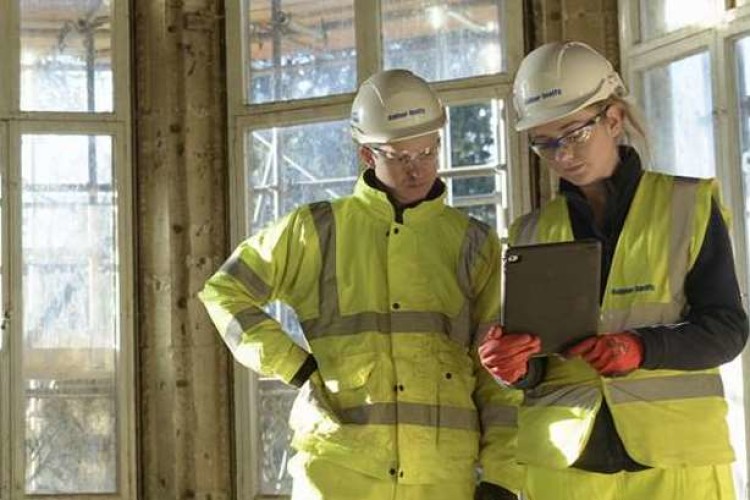The company’s 2018 results represent the culmination of a turnaround and streamlining plan, called to Build to Last, that began in 2015.
Balfour Beatty made a pre-tax profit of £123m in 2018, up 5% (2017: £117m) on revenue of £6,634m (2017: £6,916).
The financial results were impaired by a £29m loss on the Aberdeen Western Peripheral Route roadbuilding project and a £12m loss on the disposal of Heery International in the USA, among other things. There was also a £28m loss booked following the High Court’s landmark ruling on the equalisation of guaranteed minimum pensions.
Overall, underlying pre-tax profit increased a healthier 10% to £181m (2017: £165m).
Average net cash increased to £194m (2017: £42m) and year-end net cash was £337m (2017: £335m).
Underlying revenue from UK construction was down by 5% to £1,900m (2017: £1,998m) but underlying operating profit improved to £28m (2017: £16m). This meant that the operating margin in UK construction for the year was 1.5% (2017: 0.8%); in the second half of 2018 the margin was 2.4%, within the 2-3% industry standard margin range that the company has been targeting.

Underlying revenue in the USA fell by 8% in the year to £3,329m (2017: £3,634m), with an underlying operating profit of £44m (2017: £41m).
In Asia, Balfour Beatty's half-share of Gammon delivered revenue down 12% to £898m, with an increased underlying operating profit of £23m (2017: £15m).
Support services, which comprises utilities and transportation businesses, delivered an underlying profit of £46m (2017: £41m) on revenue of £1,104m (2017: £1,061m)
Chief executive Leo Quinn said: “These results demonstrate the value being created through the Build to Last programme. Balfour Beatty's transformation has gone beyond resolving the legacy issues of forced growth: the group's strong competitive positions in large and growing infrastructure markets, and the platform provided by its scalable operating model, provide the ability to deliver profitable managed growth.
“Since the start of Build to Last in 2015, Balfour Beatty has simplified and refocused its operations, embedded new governance, reduced operating expenses by almost 40% and invested steadily in innovation, capability and leadership. As well as the delivery of all Build to Last targets, culminating in industry standard margins, every metric for a culture which is Lean, Expert, Trusted and Safe shows significant continuous improvement. To ensure these improvements are sustainable, they are embedded within consistent systems and processes which address risk and provide management with transparency and control.”
Balfour Beatty launched its ‘25 by 2025’ plan in 2018, with the promise of further financial improvement. Leo Quinn explained: “With the goal to reduce onsite activity by 25% by 2025 Balfour Beatty will increasingly use modular, innovation and digital solutions, in order to become more productive and efficient. From modular on tall towers such as the Madison project in London to the prefabrication of bridges at the £1bn A14 project, the group will look increasingly to utilise offsite manufacturing. With enhanced BIM modelling, virtual reality, drones and laser scanning, new technologies are transforming the construction industry. Properly applied, they have the power to lower cost, improve quality and enhance safety.”
Got a story? Email news@theconstructionindex.co.uk
.png)


